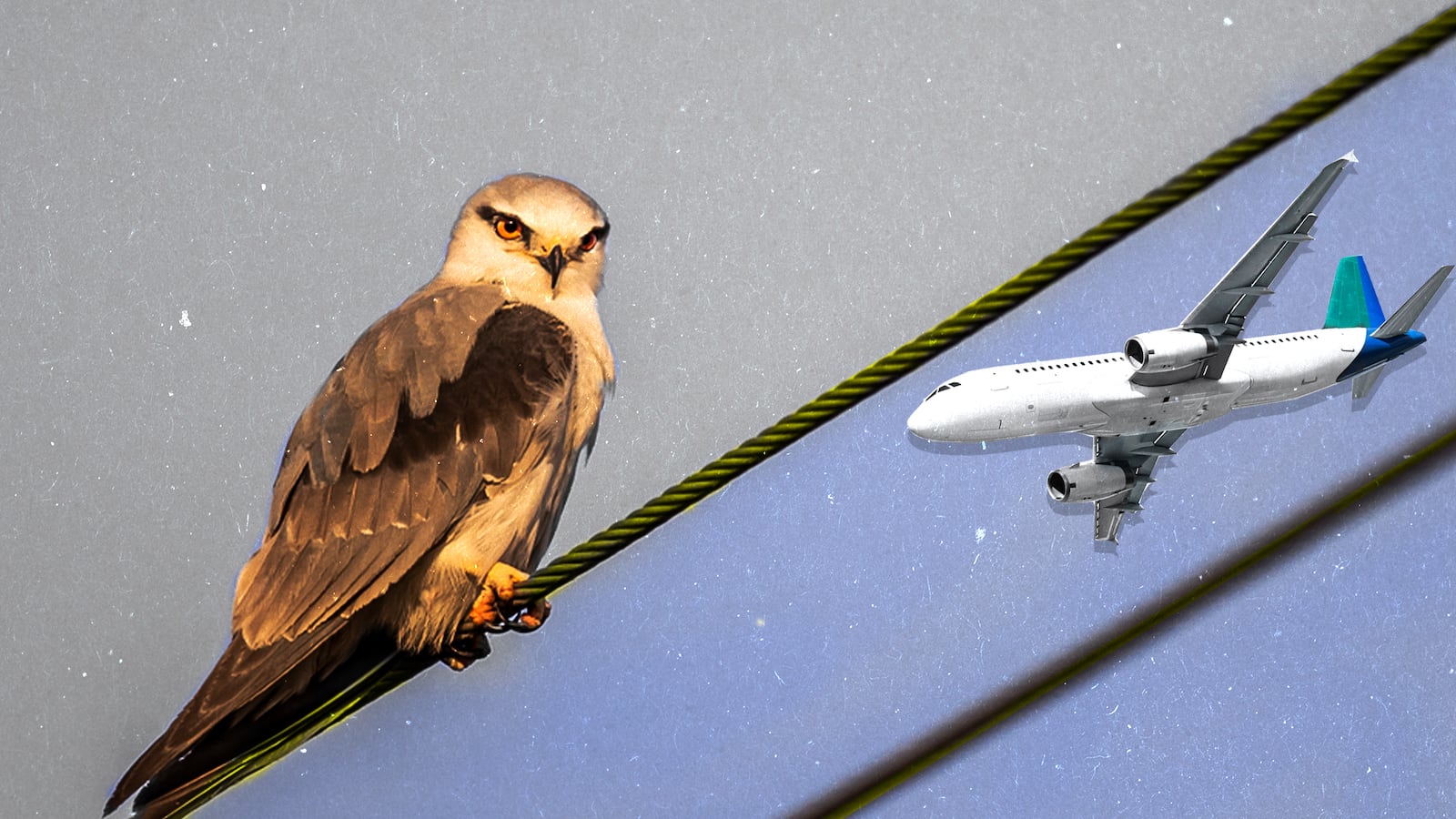For decades, airline pilots have grappled with a lethal, unpredictable enemy: birds.
They may be tiny compared to planes, but birds can cause massive damage. Collisions with planes after takeoff or before landing have led to 15 recorded human deaths in U.S. airspace between 1990 and 2008. They cause an estimated $1.2 billion in worldwide damage each year, along with countless flight delays and immeasurable hand-wringing from federal aviation officials.
Even hiring skilled shooters and training peregrine falcons to clear areas of birds hasn’t made much of a dent. The Federal Aviation Administration documented 138,257 airplane-bird collisions between 1990 and 2013 in U.S. airspace alone, nearly 10 percent of which caused damage to civil aircraft.
But engineers at CalTech have developed an innovative solution: an algorithm for an autonomous drone that can divert flocks of birds away from a protected airspace.
The CalTech study, led by aerospace professor Soon-Jo Chung and published this August in IEEE Transactions on Robotics, required one crucial first step: figuring out how flocks work, from how they communicate to how they fly in perfect formation to (most importantly) how they respond to threats.
The team discovered a few key takeaways. First, flocks don’t have a centralized communication system. Chung told The Daily Beast that each bird only passes messages to its immediate neighbors, meaning that “information propagates, like a wave.”
Different species of birds communicate threats at different distances, Chung added. Flocks of egrets changed their path when a drone was about 20 meters away from the nearest bird, but loons didn’t react until the drone got much closer, about 10 meters away.
Second, this tightly-controlled communication system only goes so far. If a threat flies too fast or too close to the birds, they’ll panic and scatter, making them unpredictable and uncontrollable.
All of this information, Chung said, was vital in building the drone’s algorithm. “If you can know how this flock will react,” Chung told The Daily Beast, “how fast, how they’re going to change their direction—if you can know that, you can use that information in your herder”—what the team calls the drone.
And that’s exactly what CalTech did. Once the team understood the birds’ flocking dynamics and threat response behavior, they replicated it in a mathematical model.
The resulting algorithm, which uses either camera footage or more sophisticated avian radar data to track incoming threats, helps the drone strike the perfect balance: it flies close enough to the birds that they register a threat and change course, but not too close that it scares them into scattering. (You can watch a video of a simulated drone in action here.)
So far, it’s working. As part of the August study, Chung and his team traveled to Daejeon, South Korea, to see if an algorithm-guided drone could divert flocks of local egrets and loons away from a designated safe zone. In both cases, Chung said, the drone succeeded.
If that success could be replicated at airports across the globe, the implications could be enormous. Chung’s inspiration for the project was a January 2009 incident in which a flock of Canada geese collided with a US Airways plane soon after it left LaGuardia Airport, demolishing the engines and forcing pilot Chesley "Sully" Sullenberger to make his iconic emergency landing on the Hudson River.
Nobody on the plane was killed. But about six months after what was dubbed the “Miracle on the Hudson,” officials captured and gassed 1,235 Canada geese, and smothered 1,739 of their eggs.
In the years after the incident, federal aviation officials have tried and failed to keep birds away from airplanes.
Chung told The Daily Beast there’s substantive problems with current methods of diverting birds away from planes. Chung explained that while shooters might be able to temporarily deter a flock, “Birds are very intelligent. Once [a deterrent] is gone, they tend to come back to the airport.”
The better approach, Chung said, is using trained peregrine falcons. But those falcons still require handlers, and they’re nowhere near as predictable as a human or an algorithm.
Another popular option are human-guided drones. But those require high-level piloting capabilities and a 24-hour commitment.
CalTech’s algorithm is the first attempt to blend the best of all of these approaches. It’s controllable, predictable, and able to run continuously without human intervention.
These drones won’t be at airports soon; there will likely be federal red tape, along with barriers to integrating the technology with existing surveillance systems.
“Algorithms are ready to be deployed at airports,” Chung said—but in order for them to work, airports will also have to install platforms that connect the drones to bird-detection devices. His team at Caltech is working to troubleshoot those problems.
He’s also working to deploy the drones in wineries, which also have serious bird problems but are less hampered by strict regulation.
Chung’s algorithm is perhaps the best hope birds and airplanes have to co-exist, even if it isn’t guiding an autonomous drone. Its ability to predict flocks’ movement in response to a threat could help guide the humans that pilot remote-controlled drones, too.






